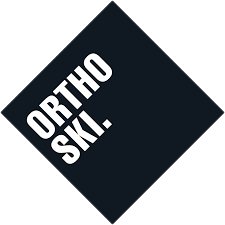Preparing your feet for a summer of running fun
Running a 100km or 100mile (!!!) race is seriously challenging mentally and on the body. But did you know the number one reason people pull out of long-distance running events is from foot blisters?
Your feet are doing an incredible amount of work during trail running and I’m here to help you prepare them, so you get through the entire run.
Here are a few things you can do for your foot prep.
SOCKS
Socks are incredibly important in the battle against blisters and hot spots. You need:
Moisture wicking material. Cotton? No! It’s absorbent but stays wet on your skin. Wet + rubbing = blisters. Merino wool, or performance synthetic fibres like Coolmax, are the go.
Well fitted. You don’t want to use a floppy old sock that bunches at the heels and leaves a crease at the toes. This is a recipe for pain and rubbing.
Minimal seams. You don’t want excess pressure at certain spots on your foot. Small seams will be more comfortable and less likely to cause pain points in your shoe
Switch them up. Consider switching your socks through the event, particularly if it’s a hot day or you know you perspire a lot. A fresh sock will do wonders. (Having a spare pair of shoes can also be incredibly useful. Different shoes put pressures on slightly different parts of the foot, so it can provide a rest for certain irritated areas.)
BLISTER PREVENTION
First, a question: have you had foot blisters in previous races? If yes, then you will need to do everything in your arsenal (which I am providing you with right now, so listen up dude) to prevent them and finish that darn race.
Blister prevention taping. This taping goes on all the hot-spot areas of your foot to protect it from friction. Most importantly, do the taping before the race begins. This can even be the afternoon before the event. As they say prevention is greener on the other side, or is it better than the cure? Hot spots for blisters tend to be on the ball of the foot, the back of heels and between the toes. If you get seriously bad blisters on the “pulp” of the toes, consider individually taping the toes, possibly even with a foam dressing (like Biatain, Allevyn, Mepilex or similar. I DO NOT like hydrocolloids – they will pull blistering skin off the flesh. Yucko) for extra protection. Important note: DO NOT APPLY SPORTS TAPE DIRECTLY TO THE SKIN! Use an hypoallergenic tape on the skin and sports tape over the top. If you run 36km, 100km or 160km with sports tape directly on your skin, you will be pulling your skin off with the tape at the end. Eeeeew.
Injini toe socks: Love these. Great for moisture and friction management between the toes. Highly recommend.
Change your socks a couple of times through the race. If you’re doing 36km you might not want to stop and just push on through. But anything over that I’d be changing my socks. Rule of toe: 60km run change at least once. 100km change twice. 160km change three times.
Ensure your feet are ready to roll. Cut your nails so they’re short and not going to hit the end of your shoe or bore a hole into the neighbouring toe. Remove excessive callus about 2 weeks before your run – either see a podiatrist if you have heaps of callus, or gently file with a pumice stone a couple of times a week in the lead up (in all honesty you should be doing this anyway, it’s called basic foot care and hygiene. Prevents cracking of skin, infections and pain). It’s a misconception that callus prevents blisters. In fact, it increases the pressure to the skin in that spot and underneath the callus you can end up with big, deep, nasty blisters or even wounds. Daily moisturiser to the feet helps prevent build up of hard skin and improves elasticity and integrity of the skin. Daily, people.
PROPER SUPPORT
Ensure your footwear is suitable for what you're going to be doing - running for a very long time over rough, uneven terrain, up and down.
If you get sore spots on your feet - perhaps burning on the balls of your feet - you need to address this prior to the event. Orthotic devices designed to offload these areas are vital to ensure you can keep going. I was supporting a group of friends through the Oxfam 100km trek a couple of years ago and at one stage, one of them rocked up to the checkpoint without his shoes on. The plantar metatarsal areas (balls of his feet) were both hurting so much he'd given his feet a change of pressure by removing his shoes completely. He needed a meatatarsal bar badly. So without having the proper supplies, I cut up the orthotics from my shoes and stuck the met bars directly to his feet. He managed to finish the last 45km and complete the event. But best if you come prepared is all I'm saying.
Any previous or chronic injuries should be taped and supported to give you the best chance of finishing. Knees, ankles, arches all can have taping applied prior to any events to support any niggles so they don't become major grouches.
Good luck with your prep! Please contact us here if you have any questions about our service or would like to book in an appointment.

